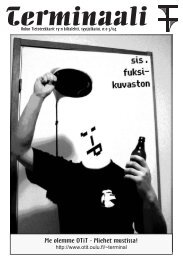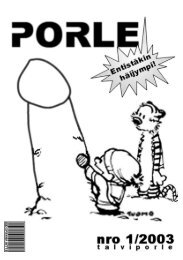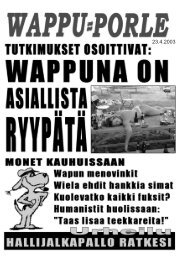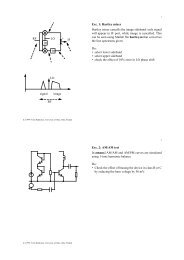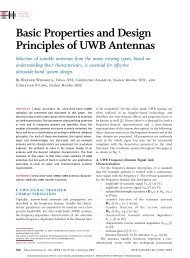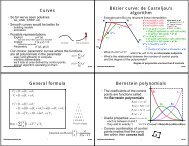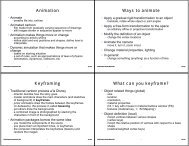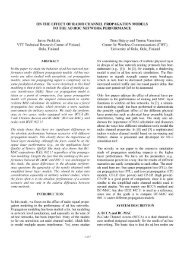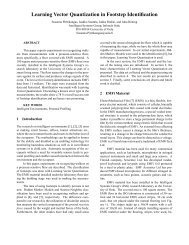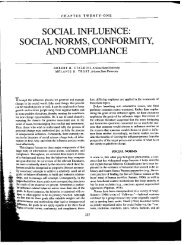Accurate, Dense, and Robust Multiview Stereopsis - Department of ...
Accurate, Dense, and Robust Multiview Stereopsis - Department of ...
Accurate, Dense, and Robust Multiview Stereopsis - Department of ...
You also want an ePaper? Increase the reach of your titles
YUMPU automatically turns print PDFs into web optimized ePapers that Google loves.
FURUKAWA AND PONCE: ACCURATE, DENSE, AND ROBUST MULTIVIEW STEREOPSIS 1363<br />
Fig. 1. Overall approach. From left to right: A sample input image, detected features, reconstructed patches after the initial matching, final patches<br />
after expansion <strong>and</strong> filtering, <strong>and</strong> the mesh model.<br />
reconstruct a crowded scene despite the presence <strong>of</strong><br />
occluders, but their approach is limited to a small number<br />
<strong>of</strong> images (typically three) as the complexity <strong>of</strong> their model<br />
is exponential in the number <strong>of</strong> input images. Goesele et al.<br />
[21] have also proposed an algorithm to h<strong>and</strong>le Internet<br />
photo collections containing obstacles <strong>and</strong> produce impressive<br />
results with a clever view selection scheme.<br />
In this paper, we take a hybrid approach that is applicable<br />
to all three types <strong>of</strong> input data. More concretely, we first<br />
propose a flexible patch-based MVS algorithm that outputs a<br />
dense collection <strong>of</strong> small oriented rectangular patches,<br />
obtained from pixel-level correspondences <strong>and</strong> tightly covering<br />
the observed surfaces except in small textureless or<br />
occluded regions. The proposed algorithm consists <strong>of</strong> a<br />
simple match, exp<strong>and</strong>, <strong>and</strong> filter procedure (Fig. 1): 1) Matching:<br />
Features found by Harris <strong>and</strong> difference-<strong>of</strong>-Gaussians<br />
operators are first matched across multiple pictures, yielding<br />
a sparse set <strong>of</strong> patches associated with salient image regions.<br />
Given these initial matches, the following two steps are<br />
repeated n times (n ¼ 3 in all our experiments). 2) Expansion:<br />
A technique similar to [17], [18], [22], [23], [24] is used to<br />
spread the initial matches to nearby pixels <strong>and</strong> obtain a dense<br />
set <strong>of</strong> patches. 3) Filtering: Visibility (<strong>and</strong> a weak form <strong>of</strong><br />
regularization) constraints are then used to eliminate incorrect<br />
matches. Although our patch-based algorithm is<br />
similar to the method proposed by Lhuillier <strong>and</strong> Quan [17], it<br />
replaces their greedy expansion procedure by iteration<br />
between expansion <strong>and</strong> filtering steps, which allows us to<br />
process complicated surfaces <strong>and</strong> reject outliers more<br />
effectively. Optionally, the resulting patch model can be<br />
turned into a triangulated mesh by simple but efficient<br />
techniques, <strong>and</strong> this mesh can be further refined by a meshbased<br />
MVS algorithm that enforces the photometric consistency<br />
with regularization constraints. The additional computational<br />
cost <strong>of</strong> the optional step is balanced by the even<br />
higher accuracy it affords. Our algorithm does not require<br />
any initialization in the form <strong>of</strong> a visual hull model, a<br />
bounding box, or valid depth ranges. In addition, unlike<br />
many other methods that basically assume fronto-parallel<br />
surfaces <strong>and</strong> only estimate the depth <strong>of</strong> recovered points, it<br />
actually estimates the surface orientation while enforcing the<br />
local photometric consistency, which is important in practice<br />
to obtain accurate models for data sets with sparse input<br />
images or without salient textures. As shown by our<br />
experiments, the proposed algorithm effectively h<strong>and</strong>les<br />
the three types <strong>of</strong> data mentioned above, <strong>and</strong>, in particular, it<br />
outputs accurate object <strong>and</strong> scene models with fine surface<br />
detail despite low-texture regions, large concavities, <strong>and</strong>/or<br />
thin, high-curvature parts. A quantitative evaluation on the<br />
Middlebury benchmark [1] shows that the proposed method<br />
outperforms all others submitted so far in terms <strong>of</strong> both<br />
accuracy <strong>and</strong> completeness for four out <strong>of</strong> the six data sets.<br />
The rest <strong>of</strong> this paper is organized as follows: Section 2<br />
presents the key building blocks <strong>of</strong> the proposed approach.<br />
Section 3 presents our patch-based MVS algorithm, <strong>and</strong><br />
Section 4 describes how to convert a patch model into a<br />
mesh <strong>and</strong> our polygonal mesh-based refinement algorithm.<br />
Experimental results <strong>and</strong> discussion are given in Section 5,<br />
<strong>and</strong> Section 6 concludes the paper with some future work.<br />
The implementation <strong>of</strong> the patch-based MVS algorithm<br />
(PMVS) is publicly available at [25]. A preliminary version<br />
<strong>of</strong> this paper appeared in [26].<br />
2 KEY ELEMENTS OF THE PROPOSED APPROACH<br />
The proposed approach can be decomposed into three<br />
steps: a patch-based MVS algorithm that is the core<br />
reconstruction step in our approach <strong>and</strong> reconstructs a set<br />
<strong>of</strong> oriented points (or patches) covering the surface <strong>of</strong> an<br />
object or a scene <strong>of</strong> interests; the conversion <strong>of</strong> the patches<br />
into a polygonal mesh model; <strong>and</strong> finally a polygonal-mesh<br />
based MVS algorithm that refines the mesh. In this section,<br />
we introduce a couple <strong>of</strong> fundamental building blocks <strong>of</strong><br />
the patch-based MVS algorithm, some <strong>of</strong> which are also<br />
used in our mesh refinement algorithm.<br />
2.1 Patch Model<br />
A patch p is essentially a local tangent plane approximation<br />
<strong>of</strong> a surface. Its geometry is fully determined by its center<br />
cðpÞ, unit normal vector nðpÞ oriented toward the cameras<br />
observing it, <strong>and</strong> a reference image RðpÞ in which p is visible<br />
(see Fig. 2). More concretely, a patch is a (3D) rectangle,<br />
which is oriented so that one <strong>of</strong> its edges is parallel to the<br />
x-axis <strong>of</strong> the reference camera (the camera associated with<br />
RðpÞ). The extent <strong>of</strong> the rectangle is chosen so that the<br />
smallest axis-aligned square in RðpÞ containing its image<br />
projection is <strong>of</strong> size pixels in size ( is either 5 or 7 in<br />
all <strong>of</strong> our experiments).<br />
2.2 Photometric Discrepancy Function<br />
Let V ðpÞ denote a set <strong>of</strong> images in which p is visible (see<br />
Section 3 on how to estimate V ðpÞ <strong>and</strong> choose the reference




